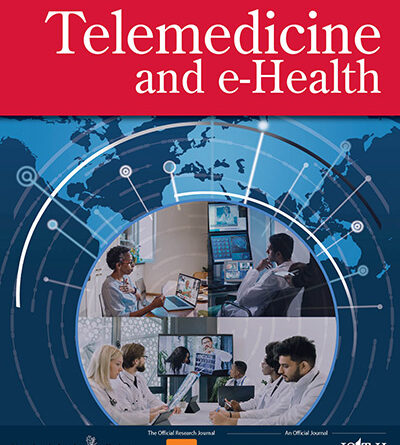The Receding Tide: Is Telemedicine in Retreat?
Several weeks ago, hurricane Ian brought its destructive power to the Caribbean and Florida’s west coast before transiting the state and hitting the entire eastern seaboard of the United States and Canada. As seen from the International Space Station, the enormity of the storm was breathtaking. As Ian was approaching Florida, the water in the Tampa Bay receded. Known as a blowout tide, usually during low tide, the water then rushes back in causing catastrophic damage to everything in its path. We also see the water in Lake Mead, on the Nevada and Arizona borders, receding, although for a completely different reason.
As the current pandemic appears to be receding, we are also witnessing a receding of telemedicine and telehealth services—at least there are some who believe in retreating! During the public health emergency, waivers were issued and policies were modified to permit wide application and reimbursement of telemedicine and telehealth services. There now appears to be a receding tide of support for telemedicine, as policy makers in the Department of Health and Human Services and the Centers for Medicare and Medicaid Services are mulling changes and reinstituting regulations that limit growth and application.
This can be seen as retreating! According to the Bipartisan Policy Center, current policies and waivers should be extended.1 Furthermore, Bashshur et al addressed telemedicine in a postpandemic world2 and Kaundinya and Agrawal posit recommendations for improving sustainability of telemedicine in a post-COVID world.3 A study by Grossman et al in Israel stated that 169 pediatricians, although utilizing telemedicine during the pandemic, also fully expect it to recede in a postpandemic era.4
For the past 30 years or so—one could argue 50+ years, there have been naysayers and pundits on the utility of telemedicine and telehealth. They quip, “there is no data, the data is not good enough,” “the studies are not robust enough” and on and on it has gone! Well there is a mountain of evidence that says otherwise. There is no longer a dearth of data. As I have mentioned before, the number of peer-reviewed publications on telemedicine and telehealth as cited in PubMed now exceeds 56,000 and it is growing each month. During the period 2020–2021, >18,500 articles were published in wide variety of clinical disciplines. So the data are there.
Second, consumerism is pushing the boundaries of health care. DeVore et al speak of this in regard to m-health and heart failure—m-health is identified as a driving factor.5 Patient demand and expectations are high not only as a result of the pandemic but also because of low-cost technologies embedded in phones and web-based services. It will become increasingly difficult to put the genie back in the bottle. Once a trend begins, it is hard to go back. Although not related specifically to telemedicine, consider the uprisings around the world, individuals are demanding change. Change can be suppressed, but it eventually wins out in some way!
We have seen politicians go against the majority opinion on a whole host of issues. Sometimes this leads to destructive events—not necessarily like a hurricane—more like prohibition, legalization of pot, or abortion. These have all led to unintended consequences. Each of these are petulant subjects! So, as those in authority who claim to know what is best begin to retreat form the proven utility of telemedicine and telehealth, remind them of our pent-up demand, needs, and conveniences!
After 30+ years in this field, my answer to the question “Is telemedicine in retreat?” is no. It is subjected to scrutiny, redesign, and process realignment, but it is not retreating. In other words, it is here to stay!
What Is in This Issue
This issue is chocked full of excellent articles from researchers in Canada, Germany, Ireland, Qatar, Singapore, South Korea, Turkey, the United Kingdom, and across the United States. They each present research in a variety of disciplines with 10 focused on COVID-19.
REFERENCES
- 1.
The Future of Telehealth After COVID-19: New Opportunities and Challenges . Bipartisan Policy Center. October 22. Available from: https://bipartisanpolicy.org/download/?file=/wp-content/uploads/2022/09/BPC-The-Future-of-Telehealth-After-COVID-19-October-2022.pdf [Last accessed: October 13, 2022]. Google Scholar - 2. Beyond the COVID pandemic, telemedicine, and health care. Telemed J E Health 2020;26(11):1310–1313; doi:
10.1089/tmj.2020.0328 Link, Google Scholar - 3. . Unpacking a telemedical takeover: Recommendations for improving the sustainability and usage of telemedicine post-COVID-19. Qual Manag Health Care 2022;31(2):68–73; doi:
10.1097/QMH.0000000000000329 Crossref, Medline, Google Scholar - 4. The future of telemedicine visits after COVID-19: Perceptions of primary care pediatricians. Isr J Health Policy Res 2020;9(1):53; doi:
10.1186/s13584-020-00414-0 Crossref, Medline, Google Scholar - 5. . The future of wearables in heart failure patients. JACC Heart Fail 2019;7(11):922–932; doi:
10.1016/j.jchf.2019.08.008 Crossref, Medline, Google Scholar


